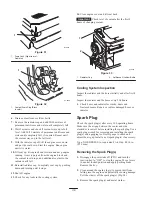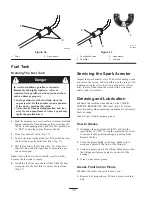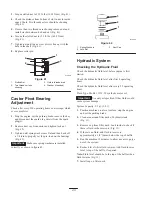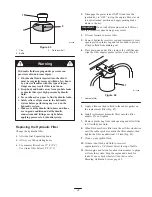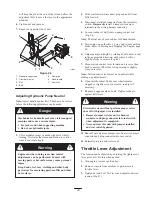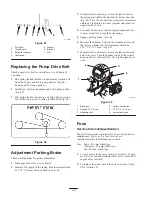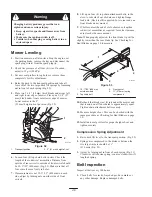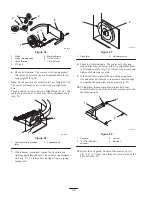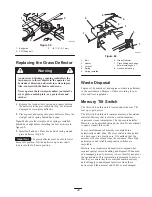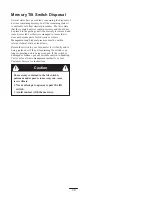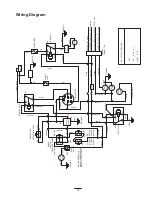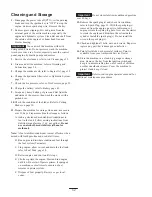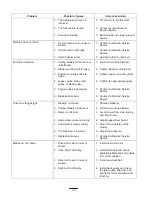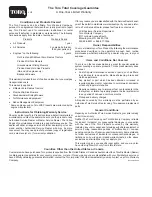
49
2
M-4374
1
3
Figure 59
1.
Belt guide
2.
PTO Drive belt
3.
1/8”–1/4” (3–7 mm)
Replacing the Grass Deflector
An uncovered discharge opening could allow the
lawn mower to throw objects in the operator’s or
bystander’s direction and result in serious injury.
Also, contact with the blade could occur.
Never operate the lawn mower unless you install a
cover plate, a mulch plate, or a grass chute and
catcher.
Warning
1. Remove the locknut, bolt, spring and spacer holding
the deflector to the pivot brackets (Fig. 60). Remove
damaged or worn grass deflector.
2. Place spacer and spring onto grass deflector. Place the
straight end of spring behind deck edge.
Note: Make sure the straight end of spring is installed
behind deck edge before installing the bolt as shown in
figure 60.
3. Install bolt and nut. Place hook end of spring around
grass deflector (Fig. 60).
Important
The grass deflector must be able to lower
down into position. Lift the deflector up to test that it
lowers into the full down position.
6
1
5
m-5037
4
2
3
7
8
Figure 60
1.
Bolt
2.
Spacer
3.
Locknut
4.
Spring
5.
Spring installed
6.
Grass Deflector
7.
Place behind deck edge
before installing bolt
8.
Hook end of spring
Waste Disposal
Engine oil, hydraulic oil and engine coolant are pollutants
to the environment. Dispose of these according to your
state and local regulations.
Mercury Tilt Switch
The tilt switch on this unit is located under the seat. Tilt
seat up to gain access.
The tilt switch on this unit contains mercury, a hazardous
material. Mercury that is outside a sealed container
vaporizes at room temperature. The vapors are harmful.
Mercury can be absorbed through the skin. Do not attempt
to open or repair this switch.
A very small amount of mercury is contained in a
hermetically sealed body. The steel switch is then potted
in a hard epoxy in a plastic case. It is unlikely that the
mercury will ever escape from the enclosure. These high
performance and reliable inexpensive switches are
recyclable.
Mercury is an important and beneficial compound but
requires special care in handling and disposal. When used
and managed properly, mercury is not a threat to people or
the environment. This information is presented to users so
that they are aware that these switches contain mercury
and will apply sound disposal practices when these
devices reach their normal end of life or are damaged.


